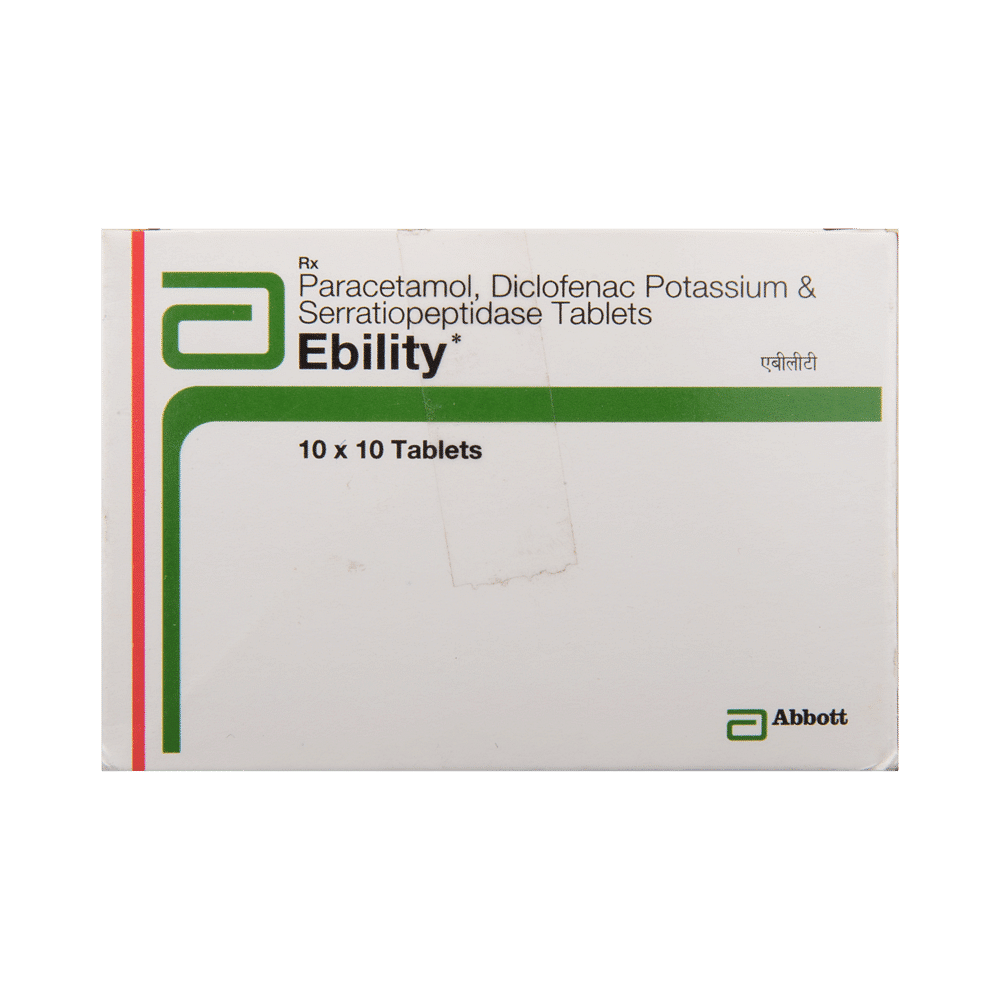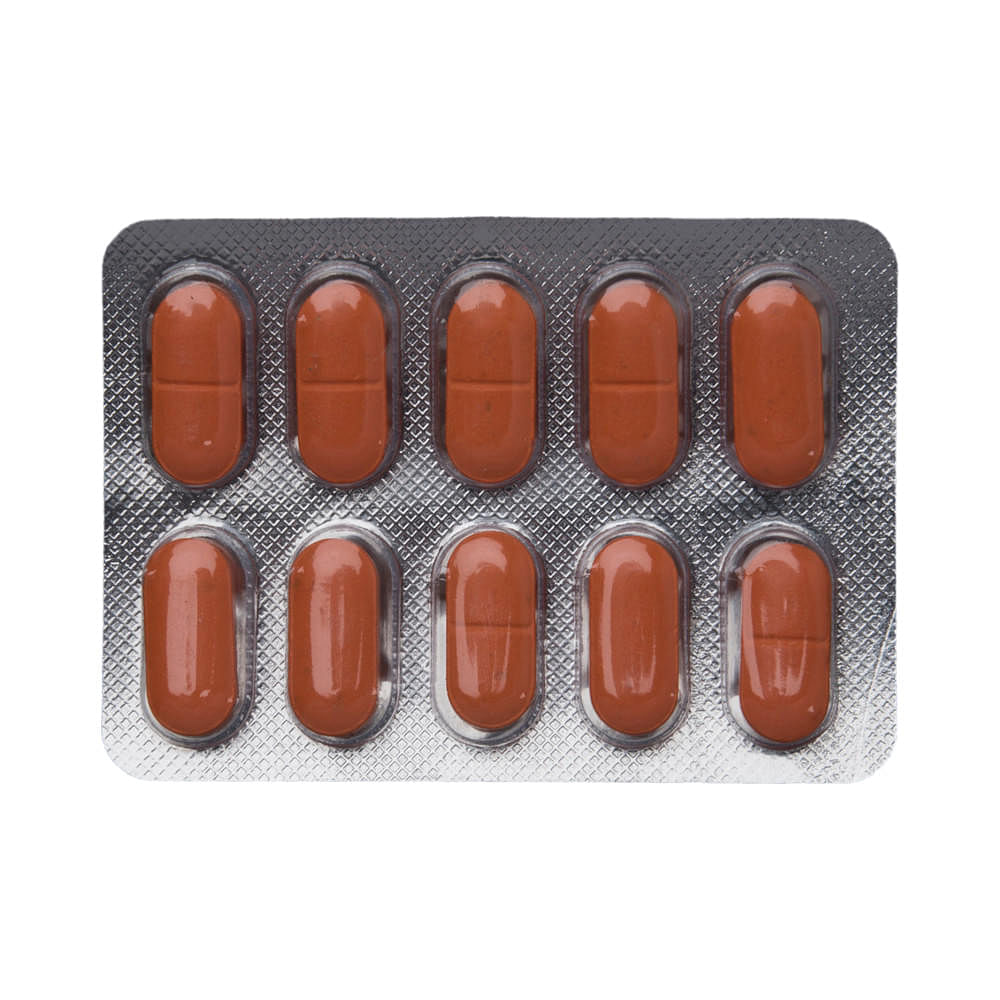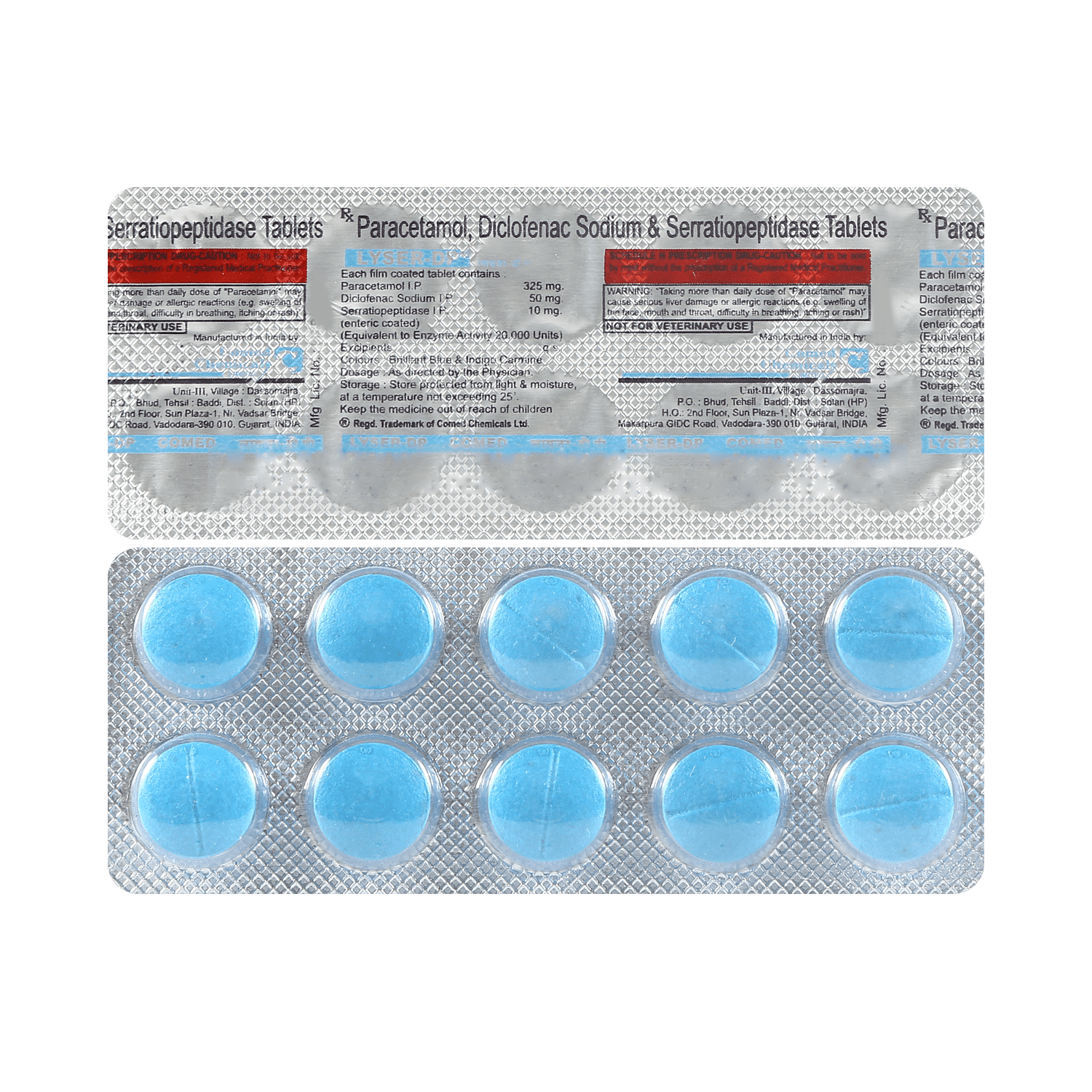
Paingo Tablet
Manufacturer
Bio-Med Pvt Ltd
Salt Composition
Diclofenac (50mg) + Paracetamol (325mg) + Serratiopeptidase (10mg)
Key Information
Short Description
Paingo Tablet is a pain-relieving medicine that helps in relieving moderate pain and reducing fever. It is used in various conditions such as muscle ache, back pain, joint pain, menstrual cramps, and toothache.
Dosage Form
Tablet
Introduction
Paingo Tablet should be taken with food. This will prevent you from getting an upset stomach. The dose and duration will depend on what you are taking it for and how well it helps your symptoms. You should keep taking the medicine even if you feel better until the doctor says it is alright to stop using it. Using this medicine may cause few common side effects such as nausea, vomiting, stomach pain, indigestion, and heartburn. If you experience any such side effects that do not go away or get worse, you should let your doctor know. Your doctor may be able to suggest ways of preventing or reducing the symptoms. In general, you should try to use the smallest amount necessary to control your symptoms. Before using the medicine, you should tell your doctor if you have any other medical conditions or disorders. It may also affect or be affected by some other medicines you are using so let your doctor know all the other medicines you are taking. It should be used with caution in patients who are alcoholic or have liver or kidney disease. Pregnant and breastfeeding women should consult their doctors first before using the medicine.
Directions for Use
Take this medicine in the dose and duration as advised by your doctor. Swallow it as a whole. Do not chew, crush or break it. Paingo Tablet is to be taken with food.
Safety Information
Side Effects
No common side effects listed
Alcohol Warning
It is unsafe to consume alcohol with Paingo Tablet.
Breastfeeding Warning
Information regarding the use of Paingo Tablet during breastfeeding is not available. Please consult your doctor.
Pregnancy Warning
Paingo Tablet is unsafe to use during pregnancy as there is definite evidence of risk to the developing baby. However, the doctor may rarely prescribe it in some life-threatening situations if the benefits are more than the potential risks. Please consult your doctor.
Interacting Medicines
Do not take it with any other medicine containing acetaminophen (drugs for pain/fever or cough-and-cold) without asking your doctor first
How it works
Paingo Tablet is a combination of three medicines: Diclofenac, Paracetamol and Serratiopeptidase. Diclofenac is a non-steroidal anti-inflammatory drug (NSAID) and Paracetamol is an antipyretic (fever reducer). They work by blocking the release of certain chemical messengers in the brain that cause pain and fever. Serratiopeptidase is an enzyme which works by breaking down abnormal proteins at the site of inflammation and promotes healing.
Quick Tips
Take it with food to avoid getting an upset stomach Do not drive or do anything that requires mental focus until you know how Paingo Tablet affects you Avoid consuming alcohol when taking Paingo Tablet as it may cause excessive drowsiness and increase the risk of liver damage Do not take it with any other medicine containing acetaminophen (drugs for pain/fever or cough-and-cold) without asking your doctor first
Related Medicines

Ebility Tablet

Zinase-DP Tablet

Lyser DP Tablet

Doltrac SP 50mg/325mg/10mg Tablet

Diczen SP 50mg/325mg/10mg Tablet

Dicvel SP 50mg/325mg/10mg Tablet

Spd Plus Tablet

AD Speed 50mg/325mg/10mg Tablet

Engenac SP 50mg/325mg/10mg Tablet

Fibonac-SP Tablet
Frequently asked questions
What are the storage conditions for Paingo Tablets?
Store Paingo Tablets in their original container or packaging. Keep it at a controlled temperature as instructed on the label. Do not use expired medicine, and ensure that it is inaccessible to pets, children, or other individuals.
What is Paingo Tablet?
Paingo Tablets are a combination of three medications: Diclofenac, Paracetamol, and Serratiopeptidase. These work together to relieve pain and inflammation by targeting chemical substances in the body that contribute to these symptoms.
Is Paingo Tablet safe for use?
Paingo Tablets are generally considered safe for patients. However, some individuals may experience common side effects such as nausea, vomiting, stomach pain, heartburn, and diarrhea. It is important to inform your doctor if you experience any persistent problems or concerns.
Can I stop taking Paingo Tablets when my pain is relieved?
Paingo Tablets are generally used for a short-term duration, and can be discontinued once the pain subsides. However, your doctor may recommend continued use in certain circumstances.
Can Paingo Tablets cause nausea and vomiting?
Yes, Paingo Tablets can sometimes cause nausea and vomiting. Consuming it with milk, food, or antacids might help minimize this side effect. Avoid fatty or fried foods in combination with this medication. In case of vomiting, ensure you drink plenty of water or other fluids in small frequent sips. If your vomiting persists, consult your doctor to assess for dehydration symptoms like dark-colored and strong-smelling urine and a low frequency of urination. Please do not take any other medications without consulting your doctor.
Can Paingo Tablets cause dizziness?
Yes, taking Paingo Tablets can sometimes lead to dizziness (feeling faint, weak, unsteady, or lightheaded) in some patients. If you experience dizziness or lightheadedness, rest in a quiet place until you feel better. Avoid driving or operating machinery during such periods.
Are there any contraindications associated with the use of Paingo Tablets?
Paingo Tablets are not recommended for individuals with known allergies to any of its components (ingredients) or excipients. It is crucial to avoid using this medication in patients with a history of stomach ulcers or those experiencing active, recurring stomach ulcer/bleeding. It also should be avoided in patients with a history of heart failure, high blood pressure, and liver or kidney disease.
Can I take Paingo Tablets with Vitamin B-complex?
Yes, Paingo Tablets can be taken alongside Vitamin B-complex preparations. Vitamin B-complex may help address vitamin deficiencies that could contribute to your symptoms.
Can I use Paingo Tablets for stomach pain?
No, Paingo Tablets are not typically used for managing stomach pain without consulting a physician. The drug can increase stomach acid secretion which might worsen an unknown underlying condition.
Can the use of Paingo Tablets cause kidney damage?
While taking Paingo Tablets does not directly pose a risk of kidney damage, exceeding recommended dosages can increase side effects. If you experience increased pain severity or the pain doesn't get relieved by the prescribed doses, please consult your doctor for re-evaluation.


